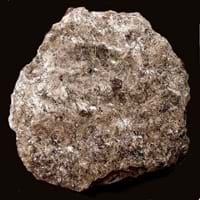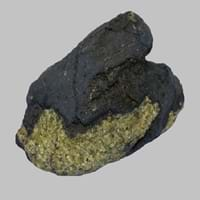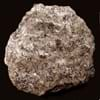Definition
Schist is a medium grade metamorphic rock with medium to large, flat, sheet like grains in a preferred orientation
Basanite is a black basaltic rock which mainly contains plagioclase, augite, olivine and nepheline and is formerly used as a touchstone
Discoverer
Unknown
Unknown
Etymology
From French schiste, Greek skhistos i.e. split
From Latin basanites + -ite
Class
Metamorphic Rocks
Igneous Rocks
Sub-Class
Durable Rock, Medium Hardness Rock
Durable Rock, Hard Rock
Group
Not Applicable
Not Applicable
Other Categories
Coarse Grained Rock, Fine Grained Rock, Medium Grained Rock, Opaque Rock
Fine Grained Rock, Opaque Rock
Texture
Foliated, Platy
Aphanitic to Porphyritic
Color
Black, Blue, Brown, Dark Brown, Green, Grey, Silver
Black, Brown, Green, Grey, Red, White
Durability
Durable
Durable
Appearance
Layered and Shiny
Glassy or Pearly
Interior Uses
Decorative Aggregates, Floor Tiles, Interior Decoration
Decorative Aggregates, Homes
Exterior Uses
Garden Decoration, Paving Stone
As Building Stone, Garden Decoration, Office Buildings
Other Architectural Uses
Not Yet Used
Whetstones
Construction Industry
As Dimension Stone, Building houses or walls, Cement Manufacture, for Road Aggregate, Roadstone
Arrowheads, Construction Aggregate, Cutting Tool, Spear Points
Medical Industry
Not Yet Used
Not Yet Used
Antiquity Uses
Artifacts
Artifacts, Monuments
Commercial Uses
Used in aquariums, Writing Slates
As a touchstone, Creating Artwork, Gemstone, In fire-starting tools, Manufacture of tools, Metallurgical Flux, Jewelry, To ignite fire, Used in flintlock firearms
Types
Mica Schists, Calc-Silicate Schists, Graphite Schists, Blueschists, Whiteschists, Greenschists, Hornblende Schist, Talc Schist, Chlorite Schist, Garnet Schist, Glaucophane schist.
Nepheline-Basanite, Analcite-Basanite and Leucite-Basanite
Features
Easily splits into thin plates, Smooth to touch
Clasts are smooth to touch, Easily splits into thin plates, Has High structural resistance against erosion and climate, Used as a touchstone
Archaeological Significance
Monuments
Not Yet Used
Used
Famous Monuments
Not Applicable
Data Not Available
Sculpture
Not Yet Used
Not Yet Used
Famous Sculptures
Not Applicable
Not Applicable
Pictographs
Used
Not Used
Petroglyphs
Used
Not Used
Figurines
Not Yet Used
Not Yet Used
Formation
Schist formed by dynamic metamorphism at high temperatures and pressures that aligns the grains of mica, hornblende and other elongated minerals into thin layers.
Basanite is a fine-grained, hard rock that forms when bits of lava shoot out of volcanoes.
Mineral Content
Alusite, Amphibole, Biotite, Chlorite, Epidote, Feldspar, Garnet, Graphite, Hornblade, Kyanite, Micas, Muscovite or Illite, Porphyroblasts, Quartz, Sillimanite, Staurolite, Talc
Augite, Feldspar, Ilmenite, Olivine, Plagioclase
Compound Content
CaO, Carbon Dioxide, MgO
Potassium Oxide, Sodium Oxide, Silicon Dioxide
Types of Metamorphism
Not Applicable
Burial Metamorphism, Cataclastic Metamorphism, Contact Metamorphism, Regional Metamorphism
Types of Weathering
Biological Weathering, Chemical Weathering, Mechanical Weathering
Chemical Weathering, Mechanical Weathering
Types of Erosion
Chemical Erosion, Coastal Erosion, Glacier Erosion
Chemical Erosion, Coastal Erosion, Glacier Erosion, Sea Erosion, Water Erosion, Wind Erosion
Grain Size
Medium to Fine Coarse Grained
Fine Grained
Fracture
Conchoidal
Uneven, Splintery or Conchoidal
Porosity
Highly Porous
Highly Porous
Luster
Shiny
Waxy and Dull
Cleavage
Slaty
Non-Existent
Specific Gravity
2.5-2.9
2.5-2.8
Transparency
Opaque
Translucent to Opaque
Density
2.8-2.9 g/cm3
2.7 g/cm3
Specific Heat Capacity
Not Available
Resistance
Impact Resistant, Pressure Resistant, Water Resistant
Heat Resistant, Impact Resistant, Pressure Resistant, Wear Resistant
Deposits in Eastern Continents
Asia
Afghanistan, Bangladesh, Bhutan, China, India, Japan, Kazakhstan, Malaysia, Pakistan, Russia, Thailand, Turkey, Vietnam
Not Yet Found
Africa
Egypt, Ethiopia, Morocco, Nigeria, South Africa
Uganda
Europe
Austria, England, France, Georgia, Germany, Italy, Liechtenstein, Monaco, Norway, Slovenia, Spain, Sweden, Switzerland
Germany, Hungary, Italy, Spain
Others
Not Yet Found
Greenland, Mid-Atlantic Ridge
Deposits in Western Continents
North America
Canada, Costa Rica, Cuba, Mexico, Panama, USA
USA
South America
Brazil, Colombia, Guyana
Bolivia, Brazil
Deposits in Oceania Continent
Australia
New South Wales, New Zealand, Queensland
New South Wales, New Zealand, Queensland, South Australia, Western Australia
All about Schist and Basanite Properties
Know all about Schist and Basanite properties here. All properties of rocks are important as they define the type of rock and its application. Schist belongs to Metamorphic Rocks while Basanite belongs to Igneous Rocks.Texture of Schist is Foliated, Platy whereas that of Basanite is Aphanitic to Porphyritic. Schist appears Layered and Shiny and Basanite appears Glassy or Pearly. The luster of Schist is shiny while that of Basanite is waxy and dull. Schist is available in black, blue, brown, dark brown, green, grey, silver colors whereas Basanite is available in black, brown, green, grey, red, white colors. The commercial uses of Schist are used in aquariums, writing slates and that of Basanite are as a touchstone, creating artwork, gemstone, in fire-starting tools, manufacture of tools, metallurgical flux, jewelry, to ignite fire, used in flintlock firearms.










